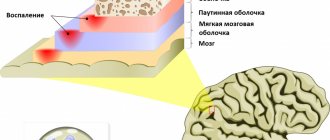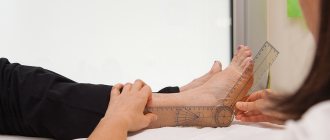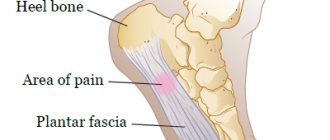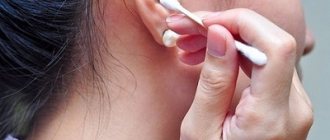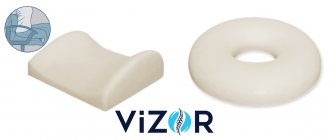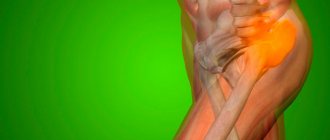A testicular cyst is a cavity filled with fluid, which is located mainly in the area of the appendages or closer to the vas deferens, although it can be localized directly on the testicle. It looks similar to varicocele or dropsy, but has other symptoms. Urologists at the Yusupov Hospital diagnose the disease using the latest equipment from leading manufacturers in the USA and European countries.
Thanks to the operating rooms being equipped with the latest instruments and high qualifications, surgeons masterfully perform all surgical interventions. Doctors use modern methods to treat testicular cysts in men without surgery. The medical staff is attentive to the wishes of patients.
A congenital cyst appears during fetal development up to 20 weeks. It can develop due to the following reasons:
- Hormonal imbalance in a woman during pregnancy;
- Threats of abortion;
- Injuries during pregnancy.
The cause of an acquired testicular cyst in men can be inflammatory diseases of the genitourinary system (orchitis, epididymitis). Testicular cysts in men can be single-chambered or multi-chambered (having septa in the cavity). Is it possible to play sports with a testicular cyst? Urologists at the Yusupov Hospital decide this issue individually in each specific case.
Indications
Specialists send patients for an ultrasound test of the testicles if there is:
- suspicion of a neoplastic process, signs of inflammation;
- absence of one or both testicles;
- enlargement of regional lymph nodes;
- for infertility;
- to monitor treatment and perform biopsies;
- when the testicles increase or decrease and their contours change;
- if the patient complains of painful manifestations in the testicular area;
- if there is a suspicion of torsion of the spermatic cord and with injuries in the scrotum area.
Testicular Diseases: When the testicle becomes enlarged, it may be cancer
Testicular cancer mainly affects young people under the age of 35. An increase in testicular size is usually the first and often only sign of cancer. Men usually neglect this symptom because it is not accompanied by pain.
The core first becomes small and hard and then begins to grow rapidly. It can be elastic and smooth or uneven. The tumor may also be small. The affected testicle appears disproportionately large in relation to the second one. If you notice such a symptom, you should immediately contact a urologist.
An experienced doctor can recognize cancer by touch. Confirmation of the initial diagnosis is the result of ultrasound of the testicles.
The only way to treat cancer is to remove the testicle. During surgery, tumor tissue is analyzed to determine its degree of malignancy. A biopsy or puncture of the testicle is performed and cells are taken for examination.
The result of this test determines whether lymph nodes will also be removed and whether the patient will be referred for chemotherapy or radiation therapy.
Just 20 years ago, testicular cancer was equivalent to a death sentence. Currently, especially when detected at an early stage, the curability of this cancer is more than 90%.
ONLINE REGISTRATION at the DIANA clinic
You can sign up by calling the toll-free phone number 8-800-707-15-60 or filling out the contact form. In this case, we will contact you ourselves.
If you find an error, please select a piece of text and press Ctrl+Enter
Ultrasound of testicles for a boy
In childhood, the reason for performing an ultrasound of the testicles may be a delay in psycho-emotional development, obesity or, conversely, lack of body weight, stunting or too much growth. With the onset of puberty in a boy, the testicles have the echo density of an adult man, and this age is different for everyone. The reasons for earlier or later development may be genetic characteristics, ecology, nutrition or other concomitant diseases. To exclude possible pathologies, a pediatrician or pediatric urologist will refer the boy for an ultrasound scan of the scrotum and testicles.
Testicular diseases: testicular torsion
During adolescence, young people who play sports or ride a lot of bicycles may experience testicular torsion. This condition is a sharp twisting of the spermatic cord with rotation of the nucleus around its axis. Symptoms include sudden, very severe pain (often at night) with rapidly increasing swelling of the scrotum, accompanied by nausea and vomiting.
Testicular torsion
If such ailments occur, you need to see a urologist as soon as possible. The doctor must surgically correct the torsion within 4-6 hours, since torsion leads to poor circulation, which can lead to testicular infarction. Then it will be impossible to save the organ and it will have to be amputated.
Losing one testicle does not threaten fertility, but many men become very emotional about the procedure and view amputation as a “diminishing masculinity.”
How is an ultrasound examination performed?
Testicular ultrasound is a painless procedure. Pain in a man can only occur with acute orchiepididymitis. In this case, it is better to wait a few days and do a diagnostic procedure after the inflammatory process has passed. In other cases, no unpleasant sensations occur during ultrasound scanning. The patient is usually in a supine position. The doctor applies the gel to the area of study and to the sensor of the device for smoother gliding and greater information content. The gel is water-based and hypoallergenic, so there is no need to worry about an allergic reaction of the body. The sensor is installed on the organs, and with smooth movements in various directions, the diagnostician scans the area, receiving information in the form of an image on the monitor. The ultrasound procedure lasts 10-15 minutes. The examination time may increase if a tumor is suspected, since in this case additional examination of adjacent organs is carried out. The results are delivered to the patient 10-15 minutes after the examination.
Previous NextConsequences
If testicular cysts in men are not treated, the following complications may develop:
- A purulent inflammatory process - develops when the scrotum becomes overcooled or becomes infected. More often it is one-sided, so the man’s one half of the scrotum becomes enlarged, redness, severe pain, and swelling appear;
- Rupture of the spermatic cord cyst - the contents enter the scrotum, causing an inflammatory process;
- Infertility - as the size of the cyst increases, it compresses the vas deferens, disrupting the passage of sperm. Due to impaired microcirculation, spermatogenesis in the testicle may be disrupted;
- Decreased potency - when the cyst grows and reaches a size greater than 3 cm, blood vessels and nerves are compressed, which is accompanied by pain and erectile dysfunction.
In order to prevent the formation of testicular cysts in men, one should avoid trauma to the perineum, hypothermia or overheating of the genitourinary organs, and promptly treat inflammatory processes of the genitourinary system: urethritis, prostatitis, inflammation of the epididymis. Men should perform a self-examination, which includes examining and palpating the scrotum for masses. You need to visit a urologist once a year. diagnostics: examine the scrotum for neoplasms. Timely detection of a testicular cyst will allow it to be treated quickly and effectively, avoid complications and improve the prognosis after treatment.
For timely prevention of infertility, it is recommended to conduct an ultrasound examination of the organs located in the scrotum in boys. In order to avoid the unpleasant consequences of a cyst, if you experience any unpleasant sensations in the testicle, make an appointment by phone at the Yusupov Hospital.
Preparation for ultrasound of the scrotum and testicles
The procedure is performed painlessly and without prior preparation. If an additional ultrasound examination of the prostate gland through the rectum is planned, preparation is necessary. It will consist of clearing the intestines of toxins using an enema and a preliminary diet to protect against flatulence. Sometimes patients have a question: do they need to take anything with them to the study? Modern private clinics in St. Petersburg are equipped with all the necessary materials: shoe covers, disposable towels, napkins and other necessary supplies. However, if you plan to go to a city or regional clinic, then it is better to take care of what you may need, namely: shoe covers or replacement shoes, a sheet and a towel or napkin in order to remove any remaining gel from the screening area after the procedure.
Symptoms of epididymal cyst
As a rule, this pathology is not accompanied by any symptoms. It is discovered by chance, during an examination for another reason, during a bath, or during a medical examination at the military registration and enlistment office. A soft, round formation can be felt closer to the upper end of the testicle; it is painless on palpation.
However, if the cyst, and with it the scrotum, increase in size, they cause distinct clinical symptoms - discomfort when walking, during coitus, as well as pain during physical activity. If the cause of the cyst is an inflammatory process, then there will definitely be pain when touching the testicular area, the scrotum will swell, and its skin will turn red.
Sometimes pathology is detected only when a complication develops - torsion of the cyst or its rupture. The patient experiences severe pain in one half of the scrotum, a painful lump is felt, and the skin over it turns red.
If medical assistance is not provided, then over time all these symptoms intensify. It becomes impossible to identify the cyst by palpation: the scrotum swells greatly.
What will a testicular ultrasound show?
During the procedure, the doctor evaluates:
- organ structure, shape, size of the testicles, clarity of contours;
- echogenicity;
- amount of free liquid;
- whether there are new formations in the area of study, and if so, then their number, density and structure;
- The vascular network and its symmetry are assessed.
If a detailed analysis of blood vessels is necessary, Doppler is used. Using an ultrasound scan of the scrotum and testicles, the following pathologies can be diagnosed: Cryptorchidism - absence of a testicle. During an ultrasound in such a situation, the doctor clarifies the location of the disappeared testicle. With such problems in the male body, the testicle is most often retained in the abdominal cavity. It is usually found in the inguinal canal. As a rule, it is reduced and does not have a clear contour, the structure is heterogeneous. Varicocele is another pathology that can be detected using ultrasound. This problem is associated with varicose veins of the seminal canal and requires immediate treatment as it can lead to infertility in men. An ultrasound of the testicles with this disease clearly shows veins, the thickness of which exceeds 3 mm. Hydrocele or dropsy . With this pathology, fluid accumulates between the two layers of the testicular membranes. The disease can be acquired and manifest after injuries, inflammatory processes and surgical interventions, as well as congenital. Hydrocele is diagnosed by ultrasound without much difficulty. Sometimes this anomaly occurs in the form of a figure eight and is multi-chambered. Cystic neoplasms of the testicle and its epididymis can be congenital, then on ultrasound they usually appear as small formations, and the fluid contained in them is transparent. Acquired testicular cysts usually occur when a duct is blocked due to injury or inflammation. An ultrasound with this disease shows a formation that has clear, rounded shapes. Orchitis and orchiepididymitis - inflammation of the epididymis. Acute inflammation of testicular tissue (orchitis) - a sharply increased volume of gland, often accompanied by dropsy. Chronic orchiepididymitis - the size of the testicle is changed in one direction or another. Enlargement of the appendage is visible. This disease is provoked by microbial flora, which affects tissues with reduced immunity. Ultrasound of the testicle with orchitis clearly shows an enlargement of the epididymis, the structure of which is heterogeneous. Oncological processes in the testicle cannot be diagnosed with high accuracy using ultrasound. With this disease, it is necessary to perform an MRI of the pelvic organs with contrast or do a biopsy to identify the malignant nature of the disease. Most often, cancerous tumors are found in the right testicle. On ultrasound, the tumor will appear as a formation or several formations of an uneven shape, and the organ will be enlarged in size. An abscess is a formation that requires urgent treatment, sometimes even surgery. On an ultrasound scan of the scrotum and testicles, it is easy to distinguish it from a cyst and tumor, since this formation has an even contour. Tuberculosis of the testicle and appendages is, as a rule, a bilateral process and is manifested on ultrasound by multiple calcifications.
| Ultrasound service of pelvic organs | Price, rub | Promotion Price |
| Ultrasound of the bladder with determination of residual urine | 800 rub. | |
| Ultrasound of the pelvis in women and men with an abdominal sensor | 1200 rub. | |
| Ultrasound of the pelvis in women with a vaginal probe | 1300 rub. | |
| Comprehensive pelvic ultrasound with abdominal and vaginal probe | 1400 rub. | |
| Ultrasound of folliculogenesis | 750 rub. | |
| Ultrasound cervicometry | 1100 rub. | |
| Ultrasound of the prostate gland with a rectal probe | 1500 rub. | |
| Ultrasound of the scrotum (testicles, appendages) | 1000 rub. | |
| Ultrasound of the prostate and bladder with an abdominal probe | 1900 rub. | |
| Comprehensive ultrasound (ultrasound of the abdominal organs + ultrasound of the kidneys + ultrasound of the thyroid gland + ultrasound of the pelvis with an abdominal probe + ultrasound of the mammary glands) | 4200 rub. | 2999 rub. |
| Comprehensive ultrasound (ultrasound of the abdominal organs + ultrasound of the kidneys + ultrasound of the thyroid gland + ultrasound of the prostate gland with an abdominal probe) | 3300 rub. | 2499 rub. |
Why does a man need testicles?
The content of the article
Without these two small gonads, located outside the abdominal cavity in the scrotum, there would be no life.
There are about 200 lobules in the testicles. Each produces sperm that migrate to the epididymis, where the sperm mature and prepare for further migration through the vas deferens and urethra.
Sperm
The second task of the testicles is the production of male hormones - androgens. One of the most important is testosterone, which is already produced by the fetus in the womb. It has a great influence on the shape and development of the testicles, scrotum, penis, vas deferens, as well as the type of man, his voice, hair color and “typically male” behavior.
The testicles are a complete sperm factory. But, giving life, these organs can get sick, just like any others.
There are testicular diseases that arise as a result of congenital or acquired genital defects. Many of these conditions affect teenagers and young men under 35 years of age. Some testicular diseases are associated with hormonal imbalances, others with injuries, and others with infections. The organs are located in the scrotum outside the abdominal cavity, so they are affected by pressure fluctuations and high temperature. Overheating can lead to hormonal imbalances and changes in sperm composition.
In all cases of genital pathology, you should seek help from a urologist or andrologist.
Ultrasound of testicles: normal
The testicle is a glandular organ of the male external reproductive system, which is oval in shape and is paired. The testicle has an appendage: head, body, tail. Normally, the spermatic cord fixes the male gland, and the organ has a very good blood supply. Anatomically, the testicles are at different levels, the left gland is located slightly lower.
Epididymal cyst: epidemiology and etiology
It looks like a round cavity filled with liquid. The latter contains a small admixture of spermatozoa and spermatocytes.
Such a cyst can develop in a man of any age, but more often occurs in young men 25–30 years old who have an active sexual life.
In some cases, pathology occurs in utero due to developmental abnormalities. A cavity is formed in the appendage between its tissues, which is subsequently filled with clear liquid.
The causes of acquired cysts include inflammatory processes of the testicles themselves or their appendages, trauma to the scrotum, as well as constant contact with toxicants. The most significant reason is inflammation of the appendage, which disrupts the anatomical structure of the organ, which leads to the formation of a cyst. That is why men who have suffered inflammation of the testicles and their appendages must undergo timely examinations by a urologist.
Diagnosis of epididymal cyst
This pathology can be recognized based on the typical complaints presented by the patient and the results of the examination. But in order to prescribe adequate treatment, it is necessary to do an ultrasound of the scrotum. It establishes the exact location of the cyst and allows you to measure its size.
Ultrasound picture of the pathology: round, oval formations are visible, there are no reflections from the internal structure with a clear smooth contour. Epididymal cysts are located posteriorly and upwardly in relation to the testicle, immediately under the tunica albuginea. Color Doppler sonography shows no blood flow.
Having received the ultrasound results, the doctor makes a differential diagnosis with another testicular pathology. In the case of inflammation of the appendage of a purulent nature, color Doppler sonography reveals the formation of an excess of blood vessels, in contrast to a cyst. If a tumor of the epididymis has formed, then the ultrasound image shows an enlarged testicle with a heterogeneous structure, in which there are areas of increased and decreased echogenicity.
If the epididymal cyst becomes very large, it is visualized on ultrasound in the same way as testicular hydrocele. In this case, the screen shows that the testicle is not surrounded by fluid on all sides, but is pushed aside by the cyst.
Sometimes, for the purpose of differential diagnosis with a malignant neoplasm, a puncture is required. The cyst is punctured under ultrasound guidance and the fluid is sucked out for histological analysis. Very rarely, computed tomography is performed for the same purposes.
The structure of the testicles in men
Particular attention should be paid to such an issue as the structure of male testicles. If you look at the anatomy of the human body and all organs, you can see the following generally accepted norms and size of male testicles:
- testicle length – from 4 to 6 cm;
- testicle width – from 2.5 to 3.5 cm;
- testicle weight – from 15 to 25(30) g.
The upper end of these organs faces outward, but the lower end faces inward. According to their structure, the glands pass into the internal and external cavities of the male genital organs, that is, they are both an external organ and an organ inside the scrotum. The testicles are also considered as an anterior and posterior ending; appendages are provided inside the posterior one.
The testicle itself is covered with a membrane of peritoneum; it consists of parenchyma, which is enclosed in a shell sphere. This sphere consists of the tunica albuginea, while from the outside experts observe the tunica vaginalis. From the posterior wall of the testicles, the tunica albuginea thickens, which becomes the beginning of the structure of the mediastinum of the testicle. Next comes the process of spreading connective tissue septa into the ductal glands; these septa are responsible for dividing the paired glands into two sectors.
The lobar spaces or sectors are cone-shaped, its base faces the membranes, and its upper end relates directly to the mediastinum. Each lobar space also has 1-4 spermatic cords, in which the maturation of sperm for further offspring occurs. Here, near the mediastinum, there is a fusion of several cords into a single seminal canal system, which passes through the mediastinum, connecting the cords and the canal ovarian system. In anatomy this is called the testicular network circuit.
In the mediastinum there are 12 or 18 testicular ducts passing through the tunica albuginea to the epididymis. The accessory duct passes into the vas deferens, then connects with the excretory duct of the seminal vesicles, which forms the ejaculatory duct. In the pelvis, the canal opens into the duct of the seminal vesicles, then passes through the prostate and opens into the urethra.
The testicles are located above the tunica albuginea and appendages; they are placed in the tunica vaginalis, which forms the serous zone. The testicle is covered with two plates - in front of the visceral and in the back of the pariental. The two plates, in turn, form the vaginal outer and inner membrane of the paired glands. The importance of the structure of the testicles is due to the fact that the function of childbirth and sexual activity depends on it.
And a little about secrets...
Have you ever suffered from problems due to PROSTATITIS? Judging by the fact that you are reading this article, victory was not on your side. And of course you know firsthand what it is:
- Increased irritability
- Impaired urination
- Erection problems
Now answer the question: are you satisfied with this? Can problems be tolerated? How much money have you already wasted on ineffective treatment? That's right - it's time to end this! Do you agree? That is why we decided to publish a link to the advice of the Chief Urologist: “How to get rid of prostatitis without the help of doctors, at home?!” Read the article...
Despite the fact that men are members of the stronger sex, the weak, fragile and delicate part of their body is the genitals, that is, the testicles and penis. Almost every man protects his genitals, providing them with maximum sterility and cleanliness, as well as a comfortable condition. Of particular importance are the testicles, which produce sperm for men for procreation and testosterone for sexual activity.
In addition, by paying attention to their genitals, everyone knows for sure what size the penis and testicles should be. And any change, be it an increase or decrease, is recorded by the man almost immediately
Moreover, this becomes a cause for anxiety and worry, although physiologically the size of the testicles, for example, should be different. Only a doctor can make a diagnosis of the presence of pathology.
Men, as a rule, worry about whether their testicles and penis are normal in size, leafing through a mountain of information about the structural features of the male genital organs. There are also those who decide to consult a doctor, noticing asymmetry or other inconsistencies with their own ideas. First of all, you need to understand that the growth of the genital organs occurs in a man at the stage of puberty under the influence of the necessary mechanisms.
For reference!
The growth of the penis and testicles in men begins during adolescence, from approximately 10 to 16 years of age. Moreover, the scrotum begins to grow first, followed by the penis itself.
USEFUL INFORMATION: Ovarian hyperstimulation and risks associated with the procedure
For many men, it remains unclear why one man has larger testicles than another, and what factors their size depends on. First of all, everything is decided by heredity and genetic predisposition. From a medical point of view, it has long been proven that the normal level of testosterone in the body of every man is determined by heredity
. It is this hormone that affects the growth of the gonads.
The boy’s lifestyle in childhood and adolescence also plays an important role. Bad habits inhibit the process of puberty and the growth of primary and secondary reproductive organs
Also, the level of testosterone depends on the degree of physical activity, so in adolescence it is important to create all the conditions for a boy to play sports. The psychological aspect also plays a significant role, whether the boy has a desire to be the first and the winner
Treatment of epididymal cyst
An effective method to cure this pathology is surgery. No medication or physical therapy can eliminate the cyst.
As a rule, the cyst is removed under local anesthesia, because the volume and time of the operation are small. The doctor cuts the skin of the scrotum above the location of the cyst, finds it and cuts it off. The material is sent for histological analysis.
After a certain time, all clinical signs of the cyst disappear. The state of health after the operation is normalized. The cosmetic defect is eliminated, erectile function returns to normal. The patient remains under medical supervision for 1–3 days and receives preventive antibacterial therapy with broad-spectrum drugs.
After surgery, the patient may feel mild pain on the first day. If necessary, take an analgesic drug, a non-steroidal anti-inflammatory drug. A suspensor is applied - a special bandage that lifts and supports the testicles. This reduces the swelling of the scrotum that appears after the intervention.
After discharge from the hospital, the patient comes for bandaging on an outpatient basis. The doctor advises you to avoid physical activity to prevent the edges of the surgical wound from spreading, and to wear elastic swimming trunks. These recommendations should be followed for approximately two months.
Physiotherapeutic effects (for example, UHF) are necessary if the epididymal cyst is removed due to its rupture or suppuration. The procedures are prescribed in a short course to avoid raising the temperature of the scrotum. This adversely affects sperm production.
When to see a doctor
A man should visit a specialist’s office if the following factors are present:
- testicles are tense or swollen. These are the most common symptoms of testicular diseases. There can be quite a few reasons for such conditions, but it doesn’t hurt to get checked and diagnosed;
- severe pain upon palpation of the male gonads. The groin area is especially rich in nerve endings, and the scrotum is no exception. The pain can be of varying strength and character - from dull aching to sudden acute pain. Only medical research and laboratory diagnostic methods will help determine the cause of this condition;
- asymmetry or increased deformation of the scrotum. This organ does not naturally have absolute symmetry, but if the difference between the left and right parts has become particularly pronounced, swelling is observed, then these are not good symptoms;
- throbbing pain in the lower abdomen, radiating to the groin area;
- nausea and dizziness;
- the presence of visible compactions or neoplasms that can be palpated;
- change in the color or texture of the skin on the scrotum;
- weakness and fatigue.
Scrotal incision

